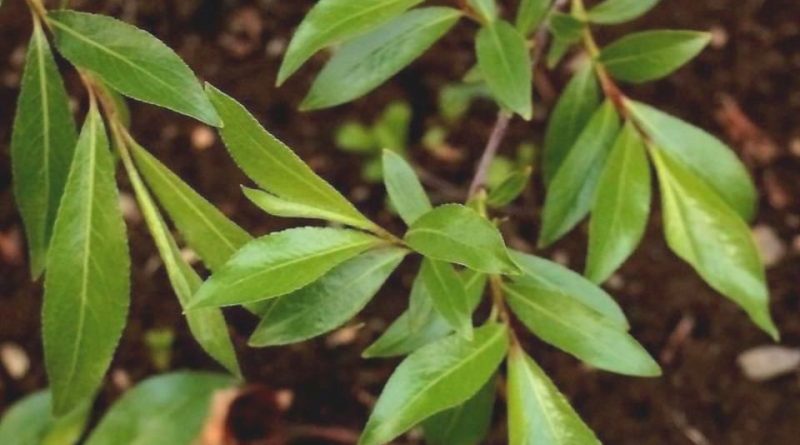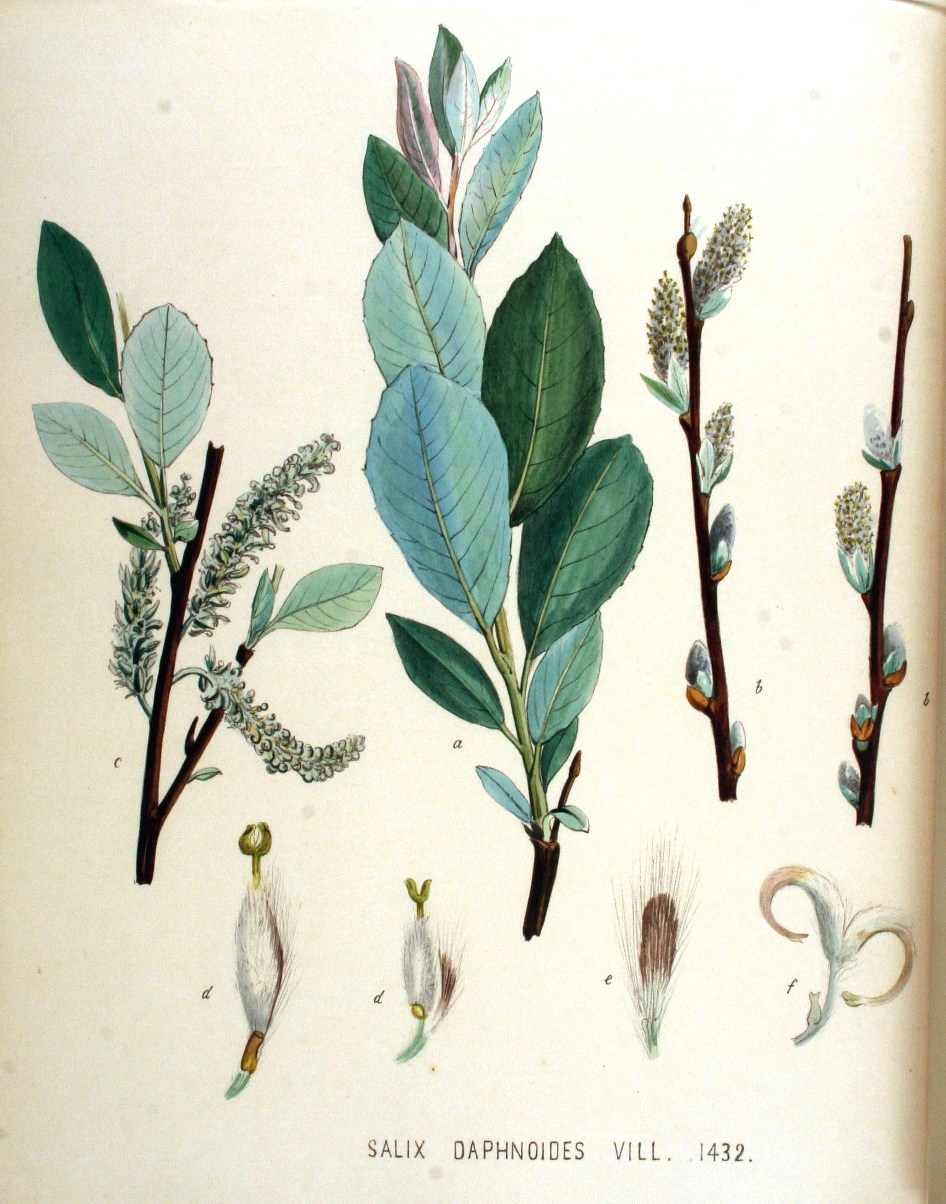Salix daphnoides
Salix daphnoides
The Violet willow (Salix daphnoides Vill.) Is an arboreal species belonging to the Salicaceae family.
Systematic –
From the systematic point of view it belongs to the Eukaryota Domain, Kingdom Plantae, Subarranean Tracheobionta, Spermatophyta Superdivision, Magnoliophyta Division, Magnoliopsida Class, Salicales Order, Salicaceae Family and then to the Genus Salix and to the Species S. daphnoides.
Etymology –
The term Salix comes from the classical Latin name of willow, perhaps associated with the Sanskrit saras acqua. The specific epithet daphnoides comes from the Greek δάφνη dáphne laurel and from the Greek εἷδος eidos appearance: similar to the laurel.
Geographic Distribution and Habitat –
The Violet willow is a mountain-sub-alpine species native to the Alps, the Pyrenees and the Carpathians; its Habitat is that of the wetlands, along the rivers and streams at altitudes between 1000 and 1800 meters. Its distribution area is located between the Baltic states and Piedmont and the Balkans to eastern France, although it has been naturalized with cultivation in a much larger area.
Description –
The Violet willow is a large shrub or small tree that can reach 12-15 meters in height, with an umbrella-shaped expanded foliage; the trunk is sinuous, with a rind that is first smooth, light gray in color and then marked by radius longitudinal furrows. The leaves are deciduous, alternate, provided with petiole, ovate-oblong, lanceolate or elliptic-lanceolate, up to 10 cm long, with acute apex and finely toothed margin; they are hairless, shiny and dark green above and glaucous underneath.
The flowers are unisexual, gathered in elongated, hairy-woolly cylindrical spikes. The fruits are small, elongated pear-shaped capsules that open into two shells, freeing small linear and hairy seeds.
Cultivation –
The Salix daphnoides is a plant that prefers alluvial substrates rich in sand or pebbles, calcareous, to texture from gravel to sandy-silty that are possibly subject to periodic submersions.
It is a plant however easy to grow on many substrates and can be grown both as a tree and as a shrub. Propagation occurs through cuttings and can be used in parks and gardens where the described pedoclimatic conditions are likely to occur.
It is a plant that can be subject to certain adversities, among which the most frequent can be aphids and some lepidopterans as well as anthracnose and rusts.
Uses and Traditions –
The use of this plant was, above all in the past, for weaving wicker (mediocre quality). It can be used to consolidate the banks of mountain streams and is used to provide reinforcement to coastal and continental sand dunes; it is also widely planted as an ornamental species in parks and along roads. As for other willows since the bark of Salix daphnoides is rich in salicin, it makes the species of medicinal value.
Preparation Mode –
The Violet willow, in addition to its use as a plant for some forest use and consolidation, can be used as a medicinal plant, for its content in salicin.
Guido Bissanti
Sources
– Acta Plantarum – Flora of the Italian Regions.
– Wikipedia, the free encyclopedia.
– Treben M., 2000. Health from the Pharmacy of the Lord, Advice and experience with medicinal herbs, Ennsthaler Publisher
– Pignatti S., 1982. Flora d’Italia, Edagricole, Bologna.
– Conti F., Abbate G., Alessandrini A., Blasi C. (edited by), 2005. An annotated checklist of the Italian vascular flora, Palombi Editore.
Warning: Pharmaceutical applications and alimurgical uses are indicated for informational purposes only and do not in any way represent a medical prescription; there is therefore no liability for their use for curative, aesthetic or food purposes.


